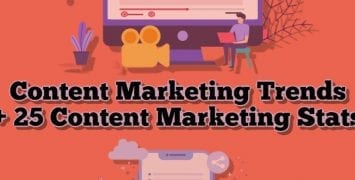You probably spend a ton of time pursuing leads in search of potential customers. Once you’ve identified someone promising, you want to nurture that lead as carefully as you can. This means carefully crafting a Conversion Funnel to slowly guide them towards a purchase.
Emails are an excellent way to connect with an audience. Think of it this way:
- If someone signs up to receive emails directly from your brand, they’re at least somewhat interested in the products or services you provide.
- If someone opens an email you’ve sent, they’re probably at least considering a purchase.
- If someone opens, reads and then takes additional action from an email you’ve sent, you’re really close to a sale.
Opening the email is often a very big hurdle. Convincing some to reading and respond to a call-to-action is no picnic, either. But don’t lose hope! Emails can convert – and convert well.
Here are a few great tips and tricks to increase your email open and conversion rate:
Create Great Subject Lines
People are unlikely to give your first email the benefit of the doubt. If they aren’t immediately engaged by the subject line, they’re not going to open the email and learn more. You need to spend time crafting subject lines which command attention. Keep your subject lines relatively short, but descriptive. Aim for about seven to 10 words.
You want the subject to present a problem and then state that your product can solve it. But don’t give away too much. Keep details about the solution for the content of your email. Include just enough information in your subject line to grab the reader’s interest – but not so much info they feel they know the whole story.
Engage the Reader Quickly with the Content of the Email
Start your marketing emails with what’s called a Second Lead. As the name implies, this a declarative statement right up top which tells the reader what the email is about.
Make sure your Second Lead contains new and different information from your subject line. Go into greater detail about the solution you provide or what makes your brand different than the competition.
Use the “Information Gap”
Your potential customers have a problem. Your product provides a solution to that problem. Does this mean you should detail exactly how your product solves that problem? No way.
You want to provide just enough information to interest your reader but not enough to give them the entire picture. Then you promise details in the Call-to-Action at the bottom of the emails.
Looking for tips on how to increase conversions when someone lands on your website for the first time? Check out the complete Guide to Conversion Rate Optimization.
Set a Delivery Schedule
You don’t want to bother your potential leads with excessive emails. At the same time, you don’t want to wait so long between emails that people start to forget about you.
When someone initially signs up for one of my e-newsletters, here’s the schedule I use:
- First, new users receive an automated email as soon as they sign up. This a short email with a welcome message and an acknowledgement of their recent sign-up.
- If they signed up for a specific piece of content, I deliver that content right away, too.
- Then I deliver the regular e-newsletter. I send one e-newsletter once a week.
Subscribers should be presented with plenty of options. People like to tailor their experience to their unique needs. Make sure each subscriber can easily opt-out any time they wish.
They should also be able to adjust how many emails they receive. By default, my subscribers receive one e-newsletter a week. But they can also choose to receive newsletters just twice a month, once every three weeks or even just once a month. People appreciate options and flexibility.
Emails are one of the most effective types of marketing, but once someone has decided to receive them. The problem is convincing people to sign up for emails in the first place. With careful use of language, a controlled message and a flexible delivery schedule, you can see a massive increase in your email open rate.




